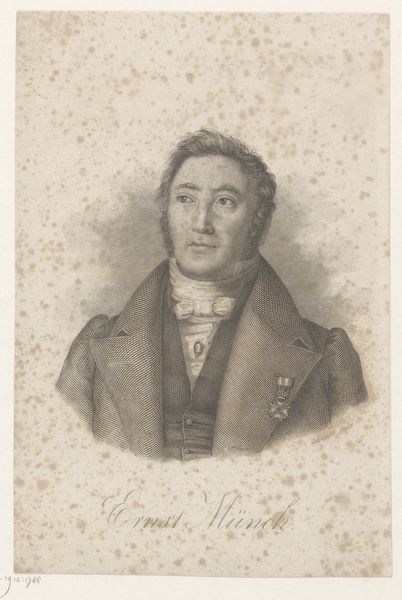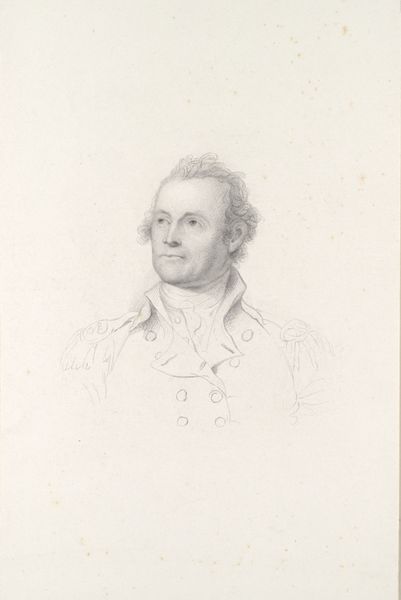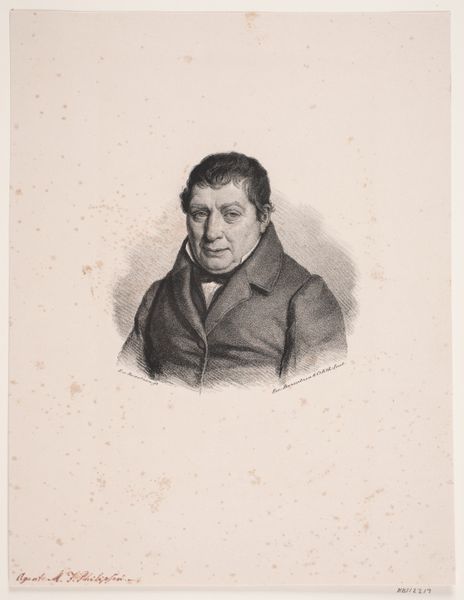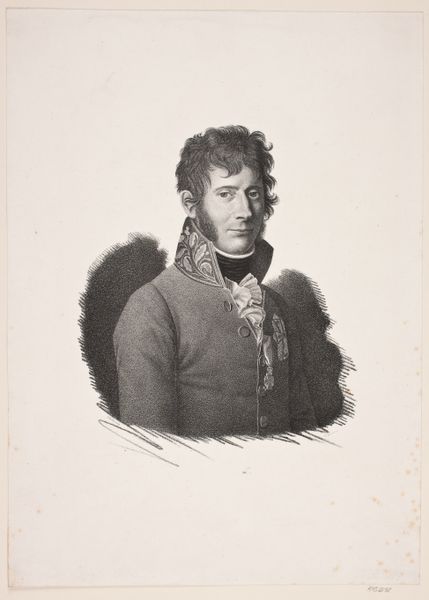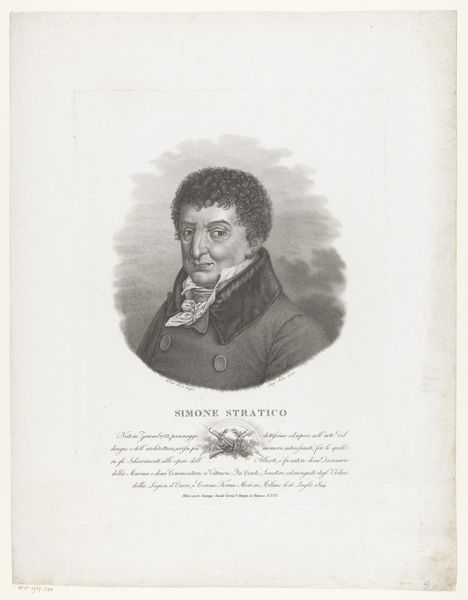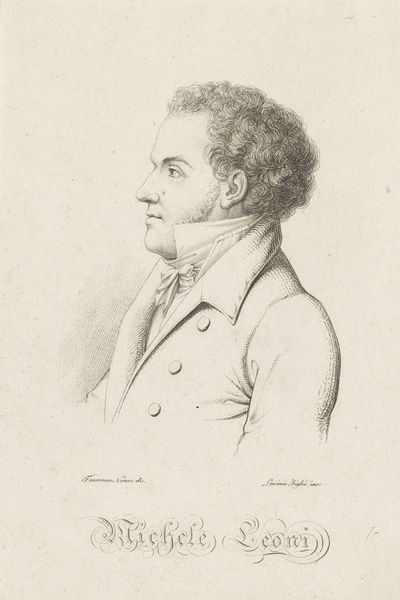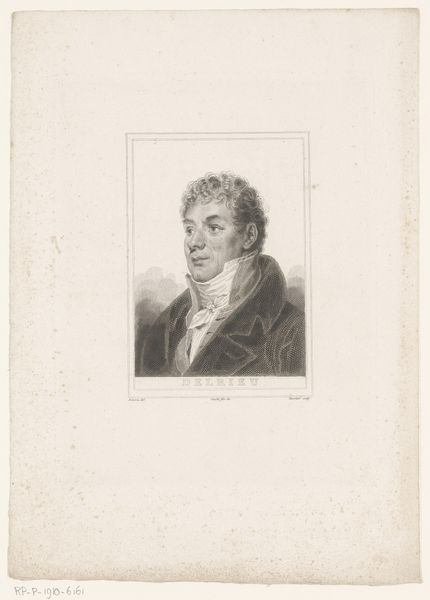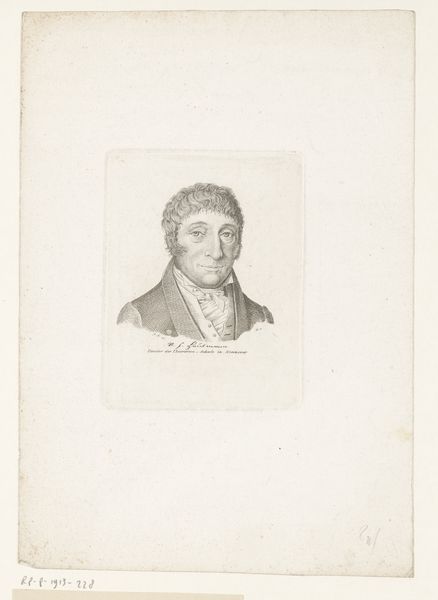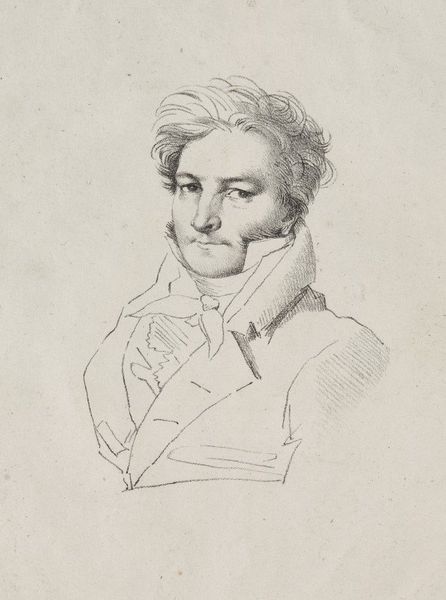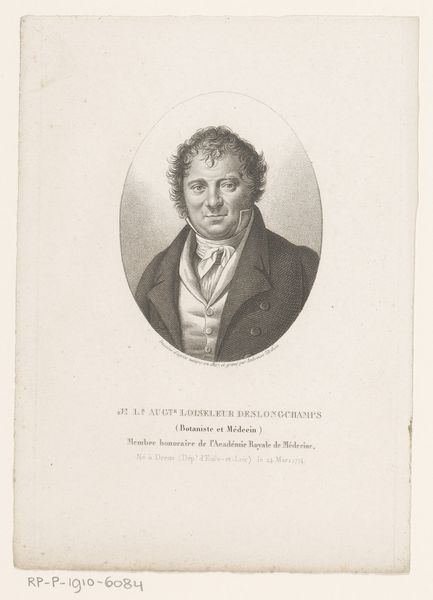
Portretten van Adriaan van der Willigen en Roeland van Eynden 1815
0:00
0:00
jacobernstmarcus
Rijksmuseum
drawing, pencil, graphite
#
portrait
#
pencil drawn
#
drawing
#
amateur sketch
#
light pencil work
#
pencil sketch
#
personal sketchbook
#
portrait reference
#
idea generation sketch
#
pencil drawing
#
romanticism
#
pencil
#
graphite
#
portrait drawing
#
pencil work
Dimensions: height 110 mm, width 175 mm
Copyright: Rijks Museum: Open Domain
Curator: Before us, we have "Portretten van Adriaan van der Willigen en Roeland van Eynden," rendered in 1815 by Jacob Ernst Marcus. The artwork employs graphite and pencil to capture these two individuals. Editor: My initial feeling is that the composition suggests a very specific social dynamic—one of reserved civility, but also a hint of societal rigidity through portraiture during that time. Curator: Certainly, the meticulous hatching technique serves to model form and define the visual structure, delineating shape and space, wouldn't you agree? Editor: I do. And the details in clothing situate the figures within a bourgeois identity. Note, too, the nuances of Romanticism here: this impulse to depict an idealised representation, solidifying specific notions about Dutch heritage. Curator: Very much so, if we examine how light plays across the surfaces, especially within the facial features, one finds the meticulous intention behind the draftsmanship and a particular approach to realism. The execution of form and texture invites one to deconstruct its internal system of codes. Editor: But do these men recognise or question the colonial dimensions of their wealth as industrialists in 19th century Netherlands? We might want to consider this while discussing portraits like this, as it adds layers to our interpretation of them as "ideal" or 'bourgeois.' Curator: You bring up important points. Still, focusing strictly on the construction of the drawing, consider the controlled contrast between light and dark that contributes to its refined quality, and also consider the ways that technique constructs hierarchies within modes of representation. Editor: True. Overall, it presents these men in a way that validates certain hierarchies. Viewing them within their temporal location pushes me to ask, ‘Who does visuality serve here?’ and ‘what societal narrative is advanced in these faces?’ Curator: To be sure, our separate perspectives may lead us in varied directions. But one must concede to the power inherent within the structural decisions here as keys to unlock art’s complex logic. Editor: Ultimately, this piece gives me a clearer idea of how deeply interwoven are identity, the dynamics of society, and artistic choices. I think this is crucial to remember while assessing Dutch masters from this period.
Comments
No comments
Be the first to comment and join the conversation on the ultimate creative platform.
